Best AI for Automating Social Media Posting in 2024
Category: Productivity & Automation
Streamline Your Social Media with the Best AI Automation Tools
If you're a professional, entrepreneur, or tech enthusiast seeking ways to save time while maximizing social media impact, you've likely searched for the best AI for automating social media posting. You already understand the strategic importance of consistent, well-timed posts across channels, but juggling content calendars, engagement, and analytics can feel overwhelming. This is where AI-powered automation steps in — not just to schedule posts, but to intelligently optimize timing, tailor content, and analyze performance with minimal effort from you.
What sets this post apart is its deep dive into the latest AI tools designed explicitly for automation, with insights into their core features, benefits, and how they can elevate your social media productivity. Whether you're scaling an emerging brand or managing multiple client accounts, you need clarity on which solution aligns perfectly with your workflow and goals. This guide cuts through the noise, offering actionable knowledge to empower you in choosing the best AI-driven social media posting tool in 2024. Read on to discover the ultimate balance between efficiency and effectiveness, and how to automate smarter — not harder.
- Streamline Your Social Media with the Best AI Automation Tools
- Overview of AI in Social Media Automation
- Key Features to Look for in AI Social Media Posting Tools
- Top AI Tools for Automating Social Media Posting in 2024
- How AI Improves Posting Efficiency and Engagement
- Integration Capabilities with Other Marketing Technologies
- Case Studies: Success Stories of Businesses Using AI for Social Media Automation
- Pricing Models and Choosing the Right Plan
- Potential Challenges and Considerations When Using AI Automation
- Future Trends in AI Social Media Automation
- Step-by-Step Guide to Implementing AI for Social Media Posting
Overview of AI in Social Media Automation
The landscape of social media automation has been fundamentally transformed by advances in artificial intelligence (AI), making it smarter, faster, and more intuitive than ever before. Today’s AI-driven tools go beyond simple scheduling — they leverage machine learning (ML), natural language processing (NLP), and predictive analytics to understand audience behavior, optimize content delivery, and maximize engagement across platforms.
-
Machine Learning: AI systems continually learn from vast datasets to identify patterns in user interactions, optimal posting times, and trending content topics. This adaptive learning enables tools to refine posting schedules and content recommendations dynamically, ensuring your social media presence stays relevant and impactful.
-
Natural Language Processing: NLP empowers AI to create, analyze, and even tailor social media copy with human-like fluency. It facilitates sentiment analysis to gauge audience reactions, automates caption generation, and enhances personalized communication — all critical for maintaining brand voice consistency while saving time.
-
Predictive Analytics: By forecasting engagement outcomes based on historical data, AI tools can predict which posts will perform best and suggest strategies to amplify reach. This predictive capacity reduces guesswork and empowers marketers to focus efforts where they matter most.
Integrating these AI capabilities results in comprehensive social media automation platforms that not only schedule posts but also optimize content strategy, maximize user engagement, and provide actionable insights to boost overall productivity. As artificial intelligence continues to evolve, its role in simplifying and enhancing social media management becomes increasingly indispensable for businesses aiming to stay competitive in the digital age.
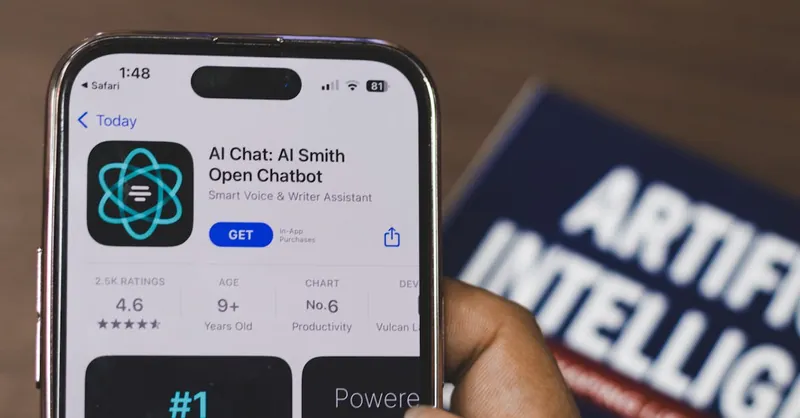
Image courtesy of Sanket Mishra
Key Features to Look for in AI Social Media Posting Tools
When selecting the best AI tool for automating your social media posting, focusing on essential features can dramatically enhance your productivity and ROI. The ideal platform should offer scheduling automation that not only queues posts in advance but intelligently optimizes publishing times based on audience behavior and engagement patterns. Beyond scheduling, effective AI tools incorporate content generation capabilities powered by natural language processing, enabling you to create engaging, on-brand captions, hashtags, and even ad copy with minimal manual effort.
Another critical feature is multi-platform management, allowing seamless posting and monitoring across diverse social networks like Instagram, Twitter, LinkedIn, Facebook, and emerging channels from a single dashboard. This centralization streamlines workflows and maintains consistent brand messaging. Additionally, robust AI-driven optimization continuously analyzes post performance and audience interactions, offering actionable recommendations such as adjusting posting frequency, format, and content type to maximize reach and engagement.
Finally, comprehensive analytics integration is indispensable for measuring the success of your social media campaigns. The best AI tools provide detailed, real-time reports that combine engagement metrics, follower growth, sentiment analysis, and conversion tracking. These insights empower you to make data-driven decisions, refine strategies, and ultimately boost the effectiveness of your social media marketing automation. Prioritizing these capabilities ensures you invest in a tool that transforms routine posting into a smart, results-oriented process.

Image courtesy of Walls.io
Top AI Tools for Automating Social Media Posting in 2024
Selecting the right AI-powered platform for social media automation is crucial for boosting efficiency and engagement in 2024’s fast-evolving digital landscape. Here is a detailed review and comparison of the leading AI tools that combine advanced scheduling, content generation, and analytics — empowering you to automate smarter, not harder.
1. Buffer AI
Buffer AI continues to be a favorite for its intuitive interface and powerful AI-driven scheduling. Its standout feature is the AI-powered content suggestions that tailor posts based on audience behavior across platforms like Instagram, Twitter, and LinkedIn. Buffer AI also uses machine learning to recommend the best posting times, ensuring your content hits peak engagement windows. Additionally, Buffer’s analytics dashboard integrates AI insights, offering clear performance tracking and actionable optimizations for content strategies.
2. Hootsuite Insights
Hootsuite Insights leverages advanced natural language processing (NLP) to analyze social sentiment, trends, and competitor performance in real-time. Its AI capabilities go beyond post scheduling by providing smart content recommendations and hashtag generation tailored to your brand’s voice and target audience. The platform supports multi-channel management and uses predictive analytics to forecast content performance, making it an excellent choice for brands that prioritize data-driven decision-making and comprehensive social listening.
3. Lately AI
Lately AI is unique for its AI-powered content repurposing feature. It automatically transforms long-form content such as blogs, podcasts, or videos into dozens of social media posts, optimized for each platform’s style and user engagement patterns. With strong NLP and machine learning foundations, Lately AI not only schedules posts but also provides detailed engagement predictions and sentiment analysis, making it a go-to solution for content-heavy brands seeking to maximize reach with minimal manual input.
4. SocialBee
SocialBee stands out with its combination of AI automation and personalized content categorization. It enables users to create posting schedules segmented by content types—such as promotional, educational, or entertaining—helping maintain a balanced and strategic feed. The AI engine optimizes post timing and recommends content variations based on audience interaction history. Its robust analytics complement the automation features by offering clear insights into follower growth and post effectiveness across multiple networks.
Comparative Snapshot of Key Features
| Feature | Buffer AI | Hootsuite Insights | Lately AI | SocialBee |
|---|---|---|---|---|
| AI-Powered Scheduling | ✅ Intelligent Timing | ✅ Predictive Timing | ✅ Content Repurposing | ✅ Content Categorization |
| Content Generation | ✅ AI Suggestions | ✅ Hashtag & Copy AI | ✅ NLP Content Creation | ✅ Personalized Variations |
| Multi-Platform Support | ✅ Broad Coverage | ✅ Extensive | ✅ Select Platforms | ✅ Extensive |
| Analytics & Insights | ✅ Performance Reports | ✅ Sentiment Analysis | ✅ Engagement Forecasts | ✅ Follower Growth Metrics |
| Social Listening | Limited | ✅ Advanced | Limited | Moderate |
Choosing among these top AI tools depends on your specific needs:
- Opt for Buffer AI or SocialBee if you need straightforward scheduling with intelligent optimization.
- Choose Hootsuite Insights for deep analytics, social listening, and data-driven content strategies.
- Use Lately AI if content repurposing and automated long-form content transformation are priorities.
Each platform harnesses the power of machine learning, NLP, and predictive analytics in unique ways to automate social media posting effectively, helping you maintain a consistent, engaging, and growth-oriented social media presence in 2024.
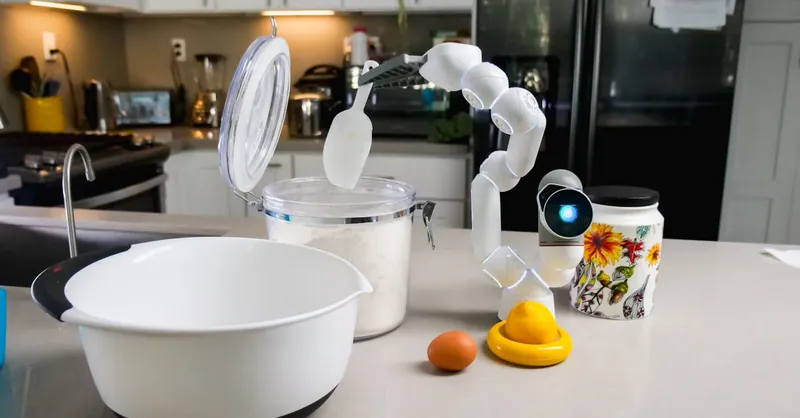
Image courtesy of Kindel Media
How AI Improves Posting Efficiency and Engagement
AI-driven social media automation revolutionizes the way brands and marketers manage their posting schedules and audience interactions by harnessing data-driven intelligence to optimize every facet of social media strategy. One of the most powerful AI advantages is its ability to determine the optimal posting times based on intricate analysis of audience activity patterns, engagement rates, and platform-specific algorithms. Rather than relying on generic schedules, AI tools dynamically adjust when your posts go live to maximize visibility and interaction—resulting in higher click-through rates, shares, and comments.
Beyond timing, AI enhances content quality through smart suggestions and real-time improvements that tailor captions, hashtags, and even visual elements according to trending topics, audience preferences, and sentiment. AI systems leverage natural language processing (NLP) and sentiment analysis to refine the tone and style of your messaging, ensuring it resonates authentically with your target demographic. This continuous content optimization reduces manual guesswork and elevates post relevance, which is critical for cutting through the noise on crowded social feeds.
Furthermore, AI-driven automation sharpens audience targeting and segmentation by analyzing user behavior, interests, and interaction histories across multiple platforms. This deep understanding enables your posts to reach the right people at the right time, improving conversion rates and building stronger community engagement. By combining predictive analytics with machine learning, AI tools provide actionable insights and recommendations that empower marketers to fine-tune their campaigns dynamically, leading to sustained growth and amplified social media ROI. In essence, AI acts as a proactive partner in your social media strategy, transforming routine posting into a highly efficient and engagement-focused process.
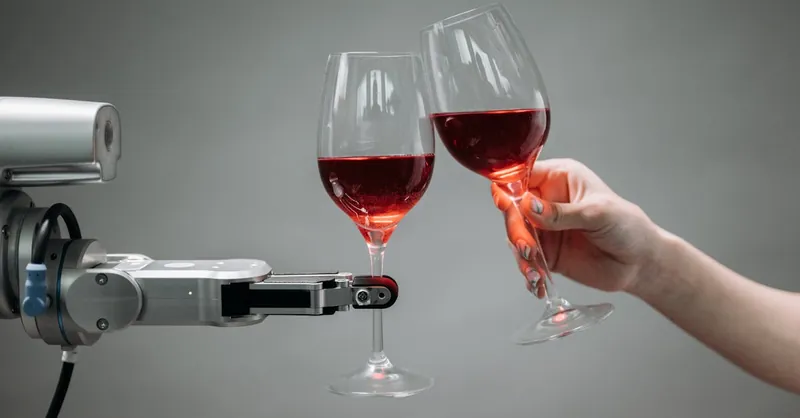
Image courtesy of Pavel Danilyuk
Integration Capabilities with Other Marketing Technologies
One of the most powerful advantages of the best AI tools for automating social media posting is their seamless integration with other core marketing technologies. Effective AI platforms connect effortlessly with your CRM (Customer Relationship Management) systems, email marketing services, analytics suites, and content creation tools, creating a unified ecosystem that streamlines workflows and enhances overall campaign efficiency. This interconnectedness ensures your social media strategy is not siloed but tightly woven into the broader marketing fabric, enabling consistent messaging and accelerated lead nurturing.
CRM Integration
By linking AI-powered social media automation with CRM platforms like Salesforce, HubSpot, or Zoho, brands can synchronize audience data and engagement histories. This integration enables personalized social content delivery based on customer lifecycle stages, purchase behavior, or support interactions. Moreover, automated social media activities can feed valuable interaction data back into the CRM, helping sales and support teams identify high-quality leads and tailor outreach efforts with a 360-degree customer view.
Email Marketing Synergy
Integrations with email marketing tools such as Mailchimp, ActiveCampaign, or Sendinblue empower marketers to coordinate social posting schedules with email campaigns. For instance, AI automation platforms can trigger social posts when new email campaigns go live, extend promotional reach, or repurpose newsletter content for social channels automatically. This cross-channel synchronization amplifies content impact and maintains consistent brand narratives across email and social touchpoints.
Analytics and Reporting Connectivity
Connecting AI social media tools with advanced analytics platforms like Google Analytics, Tableau, or native business intelligence tools enhances performance measurement. Data from social posts, engagement metrics, and conversion tracking merge with website and sales analytics, providing deeper insights into ROI and customer journeys. Unified dashboards empower marketers to identify top-performing channels, content types, and audience segments for continuous optimization.
Content Creation Platform Integration
Integration with AI-driven content creation platforms such as Canva, Adobe Creative Cloud, or Jasper AI offers a streamlined process for generating and scheduling visually rich and compelling posts. These connections allow direct import of creative assets and AI-generated copy into the scheduling workflow, reducing manual handoffs and accelerating time-to-post. This fusion of creative and automation technologies elevates content quality and maintains brand consistency effortlessly.
In summary, AI-powered social media automation tools that integrate across CRM, email marketing, analytics, and creative platforms create a cohesive, efficient marketing ecosystem. These integrations reduce manual tasks, enhance data-driven personalization, and amplify campaign performance, empowering professionals and businesses to automate smarter and unlock the full potential of their social media presence.

Image courtesy of Kindel Media
Case Studies: Success Stories of Businesses Using AI for Social Media Automation
Real-world examples demonstrate how AI-powered social media automation tools dramatically boost productivity, engagement, and time efficiency for businesses across various industries. These case studies not only highlight measurable outcomes but also showcase strategic implementations that can inspire your approach to automation.
1. E-commerce Brand Scales Engagement and Sales with Buffer AI
A fast-growing online fashion retailer integrated Buffer AI into their social media workflow to overcome inconsistent posting and low engagement rates. Leveraging Buffer’s AI-driven scheduling and content suggestions, the brand automated post timing to align perfectly with peak user activity. Within six months, they reported:
- A 40% increase in average post engagement, including likes, comments, and shares.
- A 25% boost in traffic directed from social media to their website.
- Time savings of over 15 hours per week previously spent on manual scheduling and content brainstorming.
This allowed the marketing team to focus more on creative strategy and customer interactions, proving AI automation's role in scaling social presence with less manual effort.
2. SaaS Company Enhances Lead Nurturing Using Hootsuite Insights
A SaaS provider specializing in cloud solutions adopted Hootsuite Insights to enhance their social listening and competitor analysis capabilities. By using its advanced NLP for sentiment analysis and predictive content recommendations, the company was able to tailor posts that resonated with target decision-makers in real time. Key results included:
- A 50% improvement in audience engagement rate due to content personalization.
- Identification of new market trends early, informing both social and product strategies.
- Streamlined workflow with automated hashtag generation and scheduling, saving 10+ hours weekly.
This case underscores the value of combining AI social listening with automation to drive smarter, more responsive engagement in competitive markets.
3. Content-Heavy Nonprofit Maximizes Reach with Lately AI
A nonprofit organization struggling to maintain an active social media presence turned to Lately AI for its automated content repurposing capabilities. By transforming lengthy reports, videos, and podcasts into concise social posts, the nonprofit dramatically increased their posting frequency without hiring additional staff. Outcomes included:
- Over 3x increase in weekly social posts, maintaining quality and relevance.
- A 35% growth in follower base attributed to consistent, optimized content.
- Reduced manual workload by about 12 hours per week, reallocating resources to community engagement.
Lately AI’s ability to convert long-form content into diverse social-ready posts enabled sustained awareness campaigns with minimal manual overhead.
4. Marketing Agency Improves Client Results Using SocialBee
A digital marketing agency managing multiple client accounts implemented SocialBee to harness its AI-powered content categorization and optimization features. The agency created tailored posting schedules segmented by content type for different clients, allowing precise brand messaging. Impact highlights were:
- Enhanced post reach and engagement metrics by 30% on average due to AI-optimized timing and content variation.
- Improved client reporting with clear analytics on follower trends and post performance.
- Significant reduction in time spent on manual scheduling and campaign adjustments, cutting workload by nearly 20 hours weekly across accounts.
This example illustrates how AI automation tools like SocialBee empower agencies to deliver consistent value at scale while optimizing operational efficiency.
By studying these diverse success stories, it's clear that embracing AI for social media posting automation leads to substantial productivity gains, amplified engagement, and invaluable time savings. Businesses that leverage AI not only simplify routine tasks but also unlock data-driven insights that continually refine their social strategies — a crucial advantage in today’s competitive digital landscape.
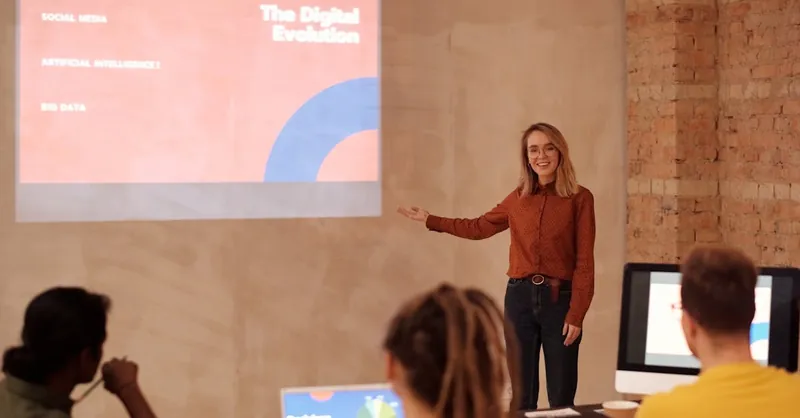
Image courtesy of Mikael Blomkvist
Pricing Models and Choosing the Right Plan
When investing in the best AI tools for automating social media posting, understanding typical pricing models and evaluating subscription tiers is essential to ensure a cost-effective solution aligned with your business needs and scale. Most AI platforms offer tiered subscription plans, which vary based on features, the number of social profiles supported, user seats, and access to premium AI functionalities such as advanced analytics, content generation, and dedicated support.
Common Pricing Structures
-
Freemium or Free Trial: Many AI tools provide a free tier or trial period that offers limited features and posting capabilities. This option is ideal for startups or solo entrepreneurs to test core functions before committing financially.
-
Basic Plans: Entry-level subscriptions generally include essential automation features like scheduled posting, basic AI-generated content suggestions, and integration with a few social media accounts. These plans suit small businesses or individuals with modest social media demands.
-
Professional or Growth Plans: Mid-tier subscriptions expand on basic features by adding multi-user access, enhanced AI-driven optimizations, deeper analytics, and broader platform integrations. These plans support mid-sized businesses or agencies managing multiple clients.
-
Enterprise Plans: Custom-priced and highly scalable, these packages offer advanced AI capabilities such as predictive analytics, social listening, API access, prioritized support, and unlimited team collaboration. Enterprise plans are tailored for large organizations requiring robust automation at scale.
Assessing Cost-Effectiveness Relative to Your Business
Choosing the right pricing tier requires balancing budget constraints with the specific needs of your social media strategy:
-
Evaluate your posting volume and platform diversity: If you manage multiple social channels or post frequently, prioritize plans that support extensive integrations and higher post limits to avoid additional fees.
-
Consider the value of AI-powered features: Access to advanced content generation, optimal scheduling, and analytics can save significant time and improve ROI, making premium plans worthwhile.
-
Factor in team collaboration needs: For agencies or growing marketing teams, multi-user access and role-based controls enhance productivity but may require upgrading to professional or enterprise tiers.
-
Analyze long-term scalability: Opt for platforms with flexible plans that allow easy upgrades as your social media presence and automation complexity grow.
By carefully analyzing your social media management scale, desired AI functionalities, and budget, you can select a subscription plan that delivers maximum productivity and impact without unnecessary expenditure. Prioritizing cost-effectiveness ensures that your investment in AI-driven social media automation directly contributes to boosting efficiency and business growth.
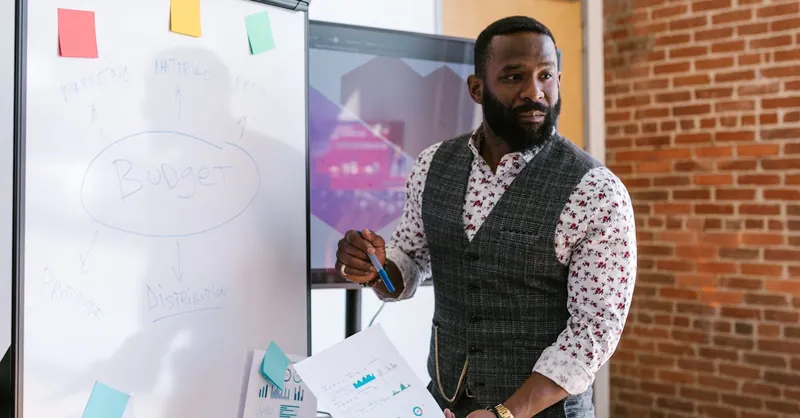
Image courtesy of RDNE Stock project
Potential Challenges and Considerations When Using AI Automation
While AI automation offers significant productivity gains for social media posting, it is essential to recognize and address several potential challenges and risks to maintain a balanced, effective strategy. One major concern is the loss of personal touch—AI-generated content may sometimes lack the authentic human nuance that builds deep connections with your audience. Over-reliance on automation can result in generic messaging, decreasing brand relatability and follower engagement. To mitigate this, incorporate human oversight in the content review process and use AI-generated suggestions as a foundation rather than a final product.
Another critical consideration is algorithm dependency. AI systems optimize posts based on platform-specific algorithms, which frequently change. This dynamic environment means that AI recommendations may become outdated or suboptimal if not continuously monitored and adjusted. Keeping abreast of platform updates and combining AI insights with your own strategic judgment ensures your social media remains agile and effective.
Data privacy and security are also paramount when adopting AI tools. These platforms process vast amounts of user data, including personal and engagement information. It is crucial to select AI software that complies with relevant regulations like GDPR and CCPA, implements strong encryption, and provides transparent data usage policies. Regular audits and cautious sharing of sensitive information can safeguard your brand and audience trust.
In summary, while AI automation significantly enhances social media posting efficiency, balancing its implementation with human creativity, continuous monitoring, and robust data privacy practices is key to mitigating risks and maximizing long-term benefits.

Image courtesy of Sanket Mishra
Future Trends in AI Social Media Automation
As AI technology continues to advance, the future of social media automation is poised to become even more intelligent, personalized, and integrated. Emerging innovations aim to revolutionize how brands automate posting, engage audiences, and harness data — delivering unprecedented productivity and marketing precision.
Advanced AI Content Creation
Next-generation AI content engines are evolving beyond simple caption or hashtag generation to produce high-quality, context-aware posts that reflect brand voice, tone, and emotional nuance. Leveraging deeper natural language understanding and generative models, these systems will craft more authentic and creative content tailored to specific platforms and audience segments. This means social media managers can expect AI tools that not only automate routine tasks but also generate compelling narratives, video scripts, and visual concepts autonomously, greatly reducing content development time while boosting engagement potential.
Hyper-Personalization at Scale
The future of AI-driven social media posting will focus heavily on hyper-personalization, delivering customized messages and offers finely tuned to individual user preferences, behaviors, and lifecycle stages. By combining advanced machine learning algorithms with extensive behavioral data, AI platforms will personalize content dynamically for each follower or customer—enhancing relevance and fostering deeper connections. This granular targeting goes far beyond broad audience segmentation, enabling brands to drive higher conversion rates and loyalty through bespoke content experiences crafted in real-time.
Deeper Integration with Conversational AI
Integrating social media automation with conversational AI technologies like chatbots and virtual assistants will further streamline customer interactions and content dissemination. This closer synergy will enable automated posting systems to engage in two-way conversations across platforms, providing instant responses, personalized recommendations, and proactive customer support directly within social feeds. Such integration will allow brands to move from broadcasting messages to fostering meaningful dialogue, building community, trust, and sustained engagement through AI-powered conversational ecosystems.
In summary, the convergence of advanced AI content creation, hyper-personalization, and conversational AI integration represents the cutting edge of social media automation innovation. Marketers and businesses that adopt these future trends will unlock new levels of productivity, audience engagement, and strategic insight—setting themselves apart in an ever-competitive digital landscape. Staying ahead of these developments and incorporating them into your social media automation strategy is essential for maximizing growth and maintaining a vibrant, impactful online presence.
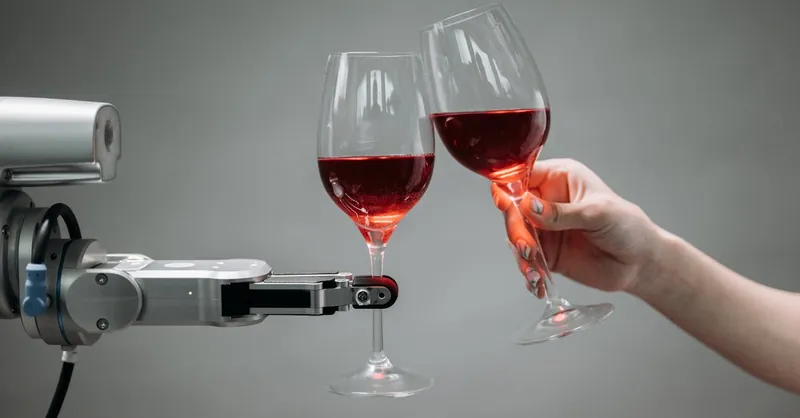
Image courtesy of Pavel Danilyuk
Step-by-Step Guide to Implementing AI for Social Media Posting
Implementing AI-driven social media automation effectively requires a strategic approach to ensure seamless integration, team alignment, and measurable results. Follow these practical steps to select the best AI tool, set up automation workflows, train your team, and monitor performance—maximizing productivity and social media impact.
1. Select the Right AI Tool for Your Needs
Begin by assessing your social media goals, content volume, and platforms used. Prioritize tools that offer features aligned with your objectives, such as AI-powered scheduling, content generation, multi-platform support, and in-depth analytics. Consider scalability and integration capabilities with your existing marketing stack (e.g., CRM, email platforms) to future-proof your automation workflow. Take advantage of free trials or demos to evaluate user experience and interface intuitiveness, ensuring the solution fits your team’s skillset and workflow.
2. Set Up Automation Workflows Thoughtfully
Design automation workflows tailored to your content strategy:
- Define the posting cadence and categorize content types (promotional, educational, engagement-driven) to maintain balance and relevance.
- Configure AI settings for optimized posting times based on audience analytics and predictive algorithms.
- Integrate AI content suggestion features with manual review steps to blend human creativity with automation accuracy.
- Automate hashtag generation and cross-platform distribution to extend reach without increasing workload.
3. Train Your Team to Leverage AI Effectively
Equip your marketing or social media team with comprehensive training on using the AI platform's capabilities. Focus on:
- Understanding AI recommendations versus manual overrides, ensuring optimal use of automation without losing authenticity.
- Interpreting analytics dashboards and reports to enable data-driven decision-making.
- Best practices for maintaining brand voice consistency while using AI-generated content.
- Encouraging continuous feedback loops between team members and the AI system to refine workflows and performance.
4. Monitor, Analyze, and Optimize Continuously
Leverage AI analytics and reporting to track key performance indicators such as engagement rates, follower growth, and conversion metrics. Establish a routine to:
- Review AI-driven performance insights regularly to identify trends and opportunities.
- Adjust posting schedules, content types, or audience segments based on data-driven findings.
- Combine AI insights with qualitative feedback from your team or customers to fine-tune messaging and approach.
- Stay updated on AI tool updates and platform algorithm changes to maintain automation efficacy.
By following this step-by-step guide, you will harness the full potential of AI-powered social media automation—streamlining your posting workflows, enhancing content relevance, and driving measurable business outcomes with minimal manual effort.

Image courtesy of Mikael Blomkvist
